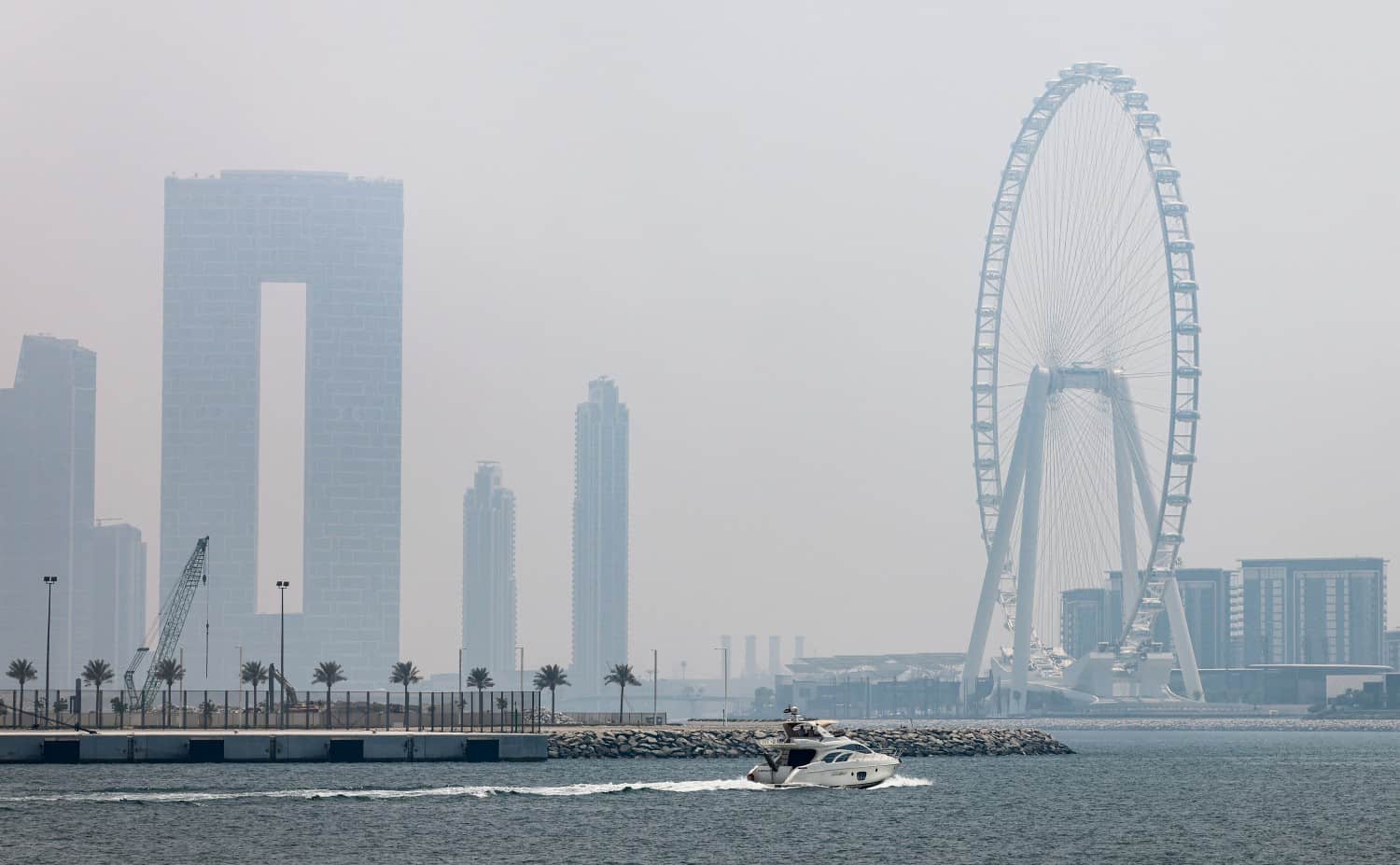Climate change is causing catastrophic losses in the Middle East and Central Asia, with poor and conflict-affected countries bearing the brunt of rising temperatures and extreme weather events.
According to a recent report by the International Monetary Fund (IMF), disasters caused by climate change since 2000 have killed approximately 2,600 people, affected seven million others, and caused $2 billion in direct material damage.
It may have also reduced annual economic growth by 1-2 percentage points on a per-capita basis.
And these events are expected to become more common and dangerous as the planet warms.
Meanwhile, temperatures in the Middle East and Central Asia have risen 1.5°C over the last three decades, twice the global increase of 0.7°C.
This has been especially damaging for hot countries, with a 1°C increase in temperature in five of the hottest countries: Bahrain, Djibouti, Mauritania, Qatar, and the UAE resulting in an immediate decline in per-capita economic growth of around 2 percentage points.
Furthermore, most of the countries in the region are in harsh climate zones, and global warming is exacerbating desertification, water stress, and rising sea levels.
At the same time, rainfall is becoming more variable and climatic disasters like droughts and floods are becoming more common.
The most affected countries
In Tunisia, for example, 90 percent of tourism is located around coasts that are endangered by erosion and are vulnerable to future sea-level rise.
And in Iran, a severe drought last year sparked protests as water shortages forced farmers out of work.
The IMF said in its report that countries with low resilience to climate change, such as unstable and conflict-affected states such as Afghanistan, Somalia, and Sudan, as well as a lower-middle-income country like Pakistan, have suffered intensely, with more people killed or affected.
On the other side, countries with stronger institutions and climate-resilient infrastructure, like heat-resistant buildings or efficient irrigation systems, have generally experienced lower human losses.
This is also true for those with higher levels of socioeconomic and human development, such as the GCC countries.
Despite global efforts to curb carbon emissions, further intensification of climate stresses seems inevitable.
By 2050, average summertime temperatures could exceed 30° Celsius in half the region’s countries.
Early warning systems
According to the IMF, many countries have realized that climate adaptation is a priority and have begun to confront climate challenges, and precedence must be given to measures that are highly beneficial under all plausible climate-change scenarios and build capacity to adapt to future adversities.
Tunisia, for instance, has expanded its capacity to produce fresh water via desalination.
Pakistan has strengthened its social safety net by scaling up targeted cash transfers.
And Tajikistan and Uzbekistan have upgraded cross-border early-warning systems for natural disasters.
At a time when there is no one-size-fits-all solution because each country faces its own set of challenges, some common principles apply to the whole region, IMF Managing Director Kristalina Georgieva emphasized in a speech during the World Government Summit in Dubai.
She stressed the importance of developing macroeconomic frameworks that incorporate climate risks to put the appropriate policy responses at the heart of national economic goals.
In addition, specific interventions could focus on boosting public investment in resilient infrastructure, encouraging a greater role for the private sector in adaptation, and adjusting inclusive growth and development agendas to reflect climate risks, for example by supporting businesses that are suffering from climate change and strengthening social protection for vulnerable households.
Simulations for Morocco show that investment in water infrastructure would improve resilience to droughts, reducing GDP losses by almost 60 percent and capping the rise in public debt.
For lower-income, fragile, and conflict-affected countries, which have suffered heavy losses historically, the immediate priority should be strengthening disaster preparedness, while improving the capacity of institutions to address climate change and the ability of communities to respond to shocks.
Stepping up adaptation efforts will require significant additional spending and, therefore, financing.
International support
Tapping additional domestic revenue can play an important part in supporting spending on climate adaptation while reducing any increase in public debt.
However, countries require greater international support to finance adaptation, ideally on concessional terms, as well as transfer expertise and technology to develop their ability to adapt to climate change.
According to data from the Organization for Economic Co-operation and Development (OECD), multilateral institutions’ donations provided around $70 billion in climate finance to the region between 2009 and 2019.
However, a large proportion was for mitigation initiatives and only around a quarter solely for adaptation. Estimated adaptation needs are much greater.
The COP27 summit in Egypt later this year offers an opportunity for the international community to scale up its climate-finance contributions and support adaptation in developing economies.
According to the IMF, enhancing resilience to climate change is critical for the Middle East and Central Asia and should be pursued alongside global mitigation and transition efforts.
For countries adapting over time, there are opportunities to create sustainable jobs and support economic recovery and resilience following the pandemic.








